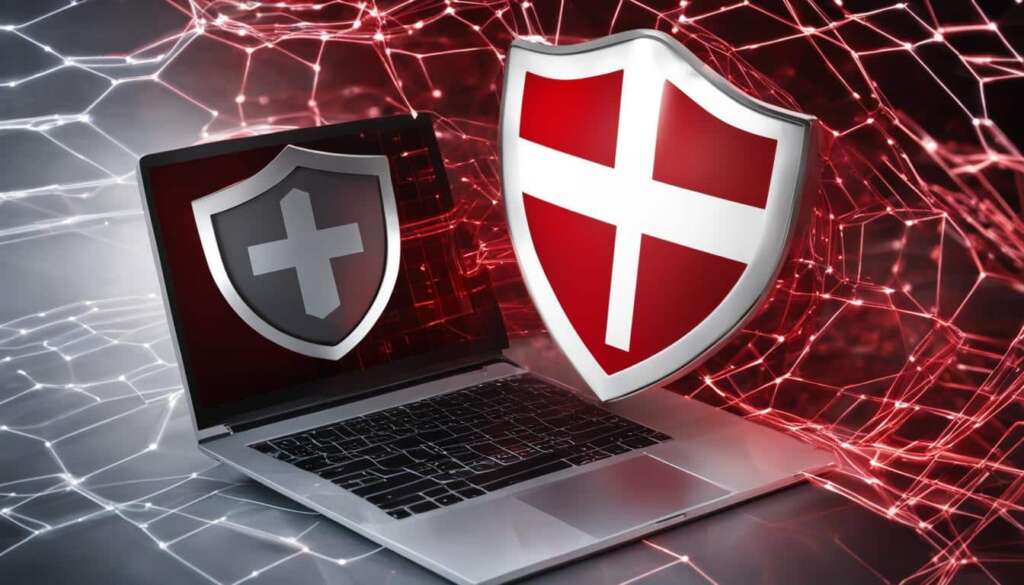Table of Contents
Insider threats in cybersecurity are a critical concern for organizations worldwide. With authorized access to sensitive data and IT systems, insiders can pose a significant risk to the security of businesses. To safeguard against these threats, it is essential to implement robust cybersecurity measures and strategies.
In this article, we will explore the best practices for protecting against insider threats and minimizing the risk of data breaches. By understanding and implementing effective insider threat protection techniques, businesses can enhance their cybersecurity posture and prevent unauthorized access to critical information.
From performing thorough risk assessments to deploying advanced security software and appliances, each section of this article will provide valuable insights into safeguarding your organization from insider threats. By following these cybersecurity measures, you can prevent data breaches and ensure the integrity and confidentiality of your business’s sensitive information.
Performing Risk Assessments to Identify Vulnerabilities
Conducting comprehensive risk assessments is a crucial step in identifying vulnerabilities and preventing insider threats within an organization’s IT security infrastructure. These risk assessments enable businesses to prioritize their critical assets, assess potential risks, and implement effective security measures to safeguard against insider threats.
During risk assessments, organizations evaluate the security of their systems, networks, and data, considering factors such as access controls, user privileges, and potential misuse of authority. By thoroughly understanding the vulnerabilities that exist within their infrastructure, businesses can proactively address weaknesses and implement robust security controls.
Through risk assessments, organizations gain valuable insights into potential insider threats, including unauthorized access attempts, privilege misuse, and data exfiltration. By identifying these risks in advance, businesses can take preemptive measures to mitigate potential threats and protect their critical data and assets.
Below is a table summarizing the key elements of a risk assessment and the corresponding actions that organizations can take to minimize the risk of insider threats:
Key Elements of a Risk Assessment
- Identifying critical assets that could be targeted by insider threats.
- Evaluating the vulnerabilities and weaknesses within the IT security infrastructure.
- Assessing potential risks and threats posed by insiders with authorized access.
- Implementing security controls and measures to mitigate identified risks.
- Regularly reviewing and updating the risk assessment to account for evolving threats.
By performing regular risk assessments and implementing appropriate security measures, organizations can effectively reduce the risk of insider threats and protect their critical assets and data from potential harm.
Documenting and Enforcing Security Policies and Controls
Clear documentation and consistent enforcement of security policies and controls are crucial in mitigating insider threats and ensuring the overall cybersecurity of an organization. By establishing comprehensive policies and implementing effective controls, businesses can reduce the risk of privilege misuse, strengthen incident response capabilities, and enhance user monitoring.
Importance of Security Policies
Security policies serve as a set of guidelines and rules that define how an organization handles and protects its sensitive data and IT systems. These policies outline the expectations and responsibilities of employees, contractors, and other authorized individuals in maintaining a secure computing environment. By clearly documenting security policies, organizations create a framework that promotes awareness and adherence to cybersecurity best practices.
“Well-documented security policies provide a foundation for ensuring consistent and uniform application of security controls throughout an organization.”
Security policies should cover various aspects of data protection, including data classification and handling, access controls, incident response procedures, and acceptable use of resources. They should also address the use of third-party services, remote access, and password management. By addressing these areas, organizations can address common vulnerabilities that may be exploited by insider threats.
Enforcement of Security Policies and Controls
Enforcing security policies and controls requires a combination of technological measures and organizational practices. It is important to implement access controls and privilege management systems that restrict access to critical systems and data based on user roles and responsibilities. Regular audits and reviews should be conducted to ensure that access privileges align with job duties and are promptly revoked when no longer necessary.
Additionally, implementing user monitoring solutions enables organizations to detect and respond to suspicious activities and potential insider threats. By monitoring user behavior and system logs, businesses can identify anomalous patterns, detect privilege misuse, and quickly respond to any security incidents. It is crucial to establish an incident response plan that outlines the steps to be taken in the event of a security breach or suspected insider threat.
Overall, documenting and enforcing security policies and controls are fundamental steps in protecting against insider threats and maintaining a strong cybersecurity posture. By establishing clear guidelines, implementing effective controls, and promoting a culture of security awareness, organizations can minimize the risk of unauthorized access and data compromise.
Implementing Physical Security for IT Environments
When it comes to protecting your organization’s critical IT infrastructure from insider threats, implementing physical security measures is of paramount importance. By establishing robust physical security practices, you can significantly minimize the risk of unauthorized access to server rooms, data centers, and other sensitive areas.
A crucial aspect of physical security is the establishment of access restrictions. Limiting access to authorized personnel only reduces the chances of a security breach. Implementing strict access control measures, such as key cards, biometric authentication, and secure locks, ensures that only individuals with the required permissions can enter secured areas.
Furthermore, it is vital to have a dedicated security team responsible for monitoring and protecting your IT environments. This team should be trained in identifying potential threats and responding swiftly to any security incidents. Their presence serves as a deterrent to unauthorized access and provides an additional layer of protection.
“Implementing physical security measures is essential to prevent unauthorized access to critical IT environments.”
Table: Best Practices for Implementing Physical Security
| Best Practice | Description |
|---|---|
| Establish access restrictions | Limit access to authorized personnel only through key cards, biometric authentication, and secure locks. |
| Conduct regular device inspections | Inspect hardware devices regularly to ensure their integrity and detect any tampering or unauthorized modifications. |
| Hire a professional security team | Employ trained professionals who can monitor and protect IT environments from potential security threats. |
| Implement surveillance systems | Install security cameras and other surveillance systems to monitor and record activities in critical areas. |
| Secure physical storage | Ensure that IT devices are securely stored when not in use to prevent theft or unauthorized access. |
Regular device inspections are another crucial element of physical security. By conducting routine checks on hardware devices, you can ensure their integrity and identify any signs of tampering or unauthorized modifications. This proactive approach helps detect potential insider threats and enhances overall security.
Lastly, implementing surveillance systems, such as security cameras, in critical areas provides an additional layer of protection. These systems enable real-time monitoring of activities and provide valuable evidence in the event of a security incident. Combined with other physical security measures, surveillance systems help deter potential insider threats and enhance overall security posture.
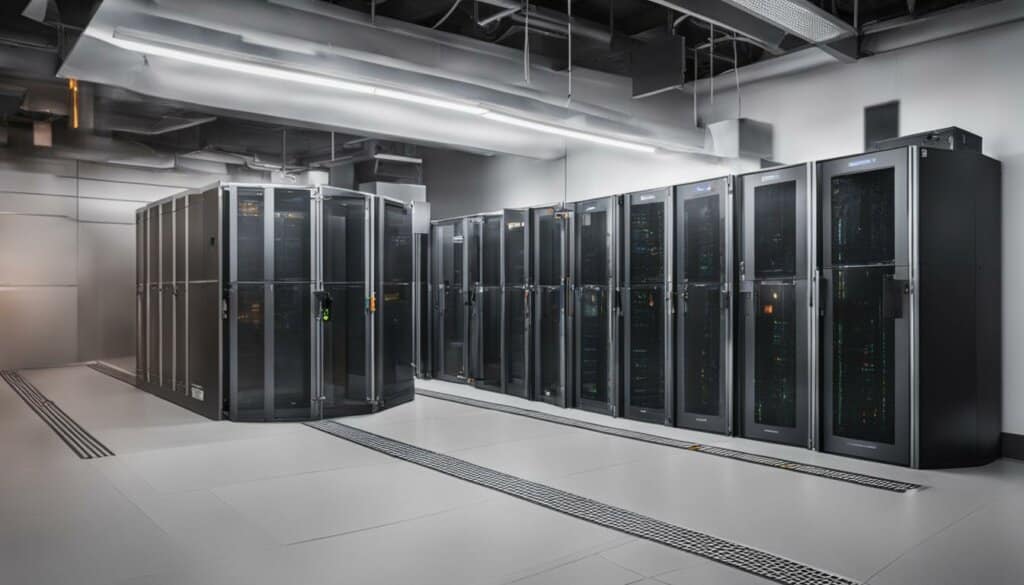
Deploying Effective Security Software and Appliances
When it comes to protecting your business against insider threats, deploying effective security software and appliances is crucial. These tools provide essential layers of defense and help safeguard your critical data and IT systems. By implementing the right security solutions, such as endpoint protection, intrusion prevention, encryption, and data loss prevention, you can significantly enhance your cybersecurity posture.
Endpoint protection software plays a vital role in securing your network endpoints, including laptops, desktops, and mobile devices. It helps detect and block malicious activities and prevents unauthorized access to sensitive information. With advanced features like antivirus, anti-malware, and firewall capabilities, endpoint protection software acts as a powerful shield against insider threats.
Intrusion prevention systems (IPS) play a crucial role in detecting and mitigating suspicious network traffic. By monitoring network activity, analyzing patterns, and blocking unauthorized access attempts, IPS software prevents potential breaches and helps protect your organization’s sensitive data. It acts as a proactive defense mechanism, constantly monitoring for insider threats and taking immediate action to prevent them.
Intrusion Prevention System Features:
- Real-time traffic monitoring and analysis
- Identification and blocking of malicious activities
- Automatic response to potential threats
- Continuous monitoring and updates
Data encryption is another critical aspect of insider threat protection. By encrypting your sensitive data, you ensure that even if it falls into the wrong hands, it remains unreadable and unusable. Encryption software uses complex algorithms to convert your data into ciphertext, making it virtually impossible for unauthorized individuals to access or decipher.
Data loss prevention (DLP) solutions help you detect, monitor, and prevent the unauthorized transmission of sensitive information. These tools allow you to set policies and rules to control the flow of data within your organization. By identifying and blocking attempts to transfer critical data to unauthorized individuals or external networks, DLP solutions help you maintain data integrity and minimize the risk of insider threats.
| Security Software | Main Features |
|---|---|
| Endpoint Protection | Real-time threat detection and prevention, firewall capabilities, antivirus and anti-malware features |
| Intrusion Prevention | Monitoring and analysis of network traffic, identification and blocking of malicious activities, automatic response to potential threats |
| Encryption | Data protection through encryption algorithms, ensuring confidentiality and integrity |
| Data Loss Prevention | Monitoring and prevention of unauthorized data transfers, policy-based control of data flow |
Deploying effective security software and appliances is a crucial step in safeguarding your business against insider threats. By leveraging endpoint protection, intrusion prevention, encryption, and data loss prevention tools, you can fortify your cybersecurity defenses and reduce the risk of data breaches or unauthorized access. Remember, it’s essential to regularly update and configure these tools to ensure maximum effectiveness and protection.
Implementing Secure Password and Account Management Policies
Strict password and account management policies are crucial in preventing insider threats and enhancing cybersecurity. By implementing effective policies and practices, businesses can significantly reduce the risk of unauthorized access and data breaches. This section will explore the best practices for password and account management, including the use of unique credentials, multi-factor authentication, and regular access privilege reviews.
One of the key aspects of secure password management is ensuring that employees use strong and unique passwords for their accounts. Requiring complex passwords that include a combination of uppercase and lowercase letters, numbers, and special characters can help protect against brute-force attacks. Additionally, enforcing regular password changes can further enhance account security.
Multi-factor authentication (MFA) is another critical component of secure account management. By requiring users to provide multiple pieces of evidence to verify their identity, such as a password and a unique code sent to their mobile device, businesses can add an extra layer of protection. MFA helps ensure that even if a password is compromised, an attacker still cannot gain unauthorized access without the additional authentication factor.
| Best Practices for Password and Account Management |
|---|
| Require the use of strong and unique passwords |
| Enforce regular password changes |
| Implement multi-factor authentication (MFA) |
| Regularly review and update access privileges |
Regularly reviewing and updating access privileges is essential to ensure that employees only have access to the systems and data necessary for their roles. By regularly auditing user accounts and removing unnecessary privileges, businesses can minimize the risk of insider threats and limit the potential damage in case of a security incident.
In conclusion, implementing secure password and account management policies is a crucial aspect of protecting against insider threats. By following best practices such as using strong passwords, implementing multi-factor authentication, and regularly reviewing access privileges, businesses can strengthen their cybersecurity posture and reduce the risk of data breaches and unauthorized access.
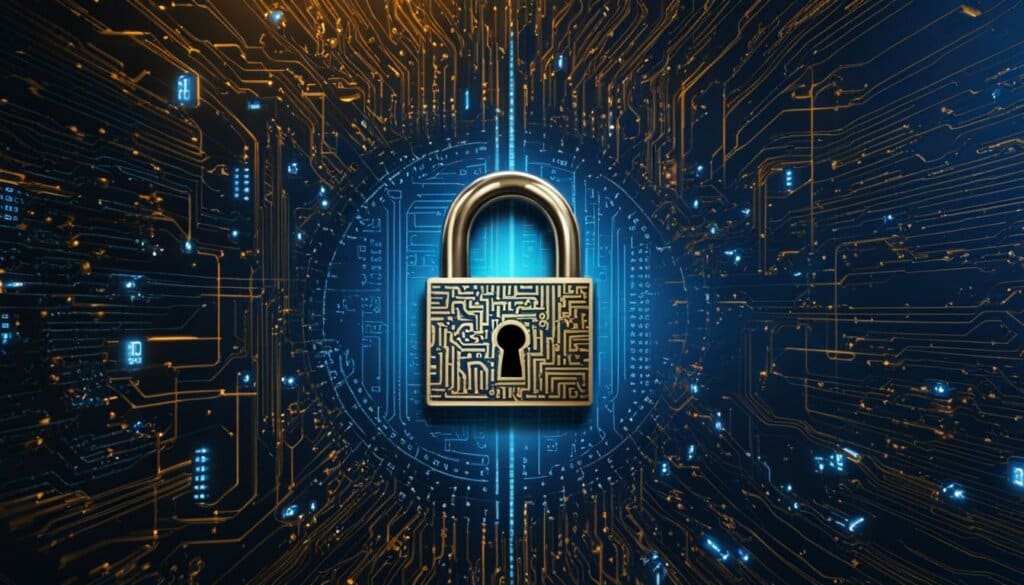
Monitoring and Controlling Remote Access to IT Infrastructure
Remote access has become increasingly common in the modern workplace, enabling employees to work from anywhere and enhancing productivity. However, it also introduces potential risks, particularly when it comes to insider threats. To safeguard against these threats, organizations must implement effective monitoring and control measures for remote access.
One essential aspect of remote access security is intrusion detection. By deploying intrusion detection systems, businesses can actively monitor network traffic and detect any unauthorized attempts to access critical IT infrastructure. These systems help identify suspicious activities, such as repeated login failures or unusual network behavior, allowing swift response and mitigation.
Wireless security is another crucial consideration when it comes to remote access. To protect against unauthorized access to wireless networks and prevent potential data breaches, organizations should implement robust encryption protocols, such as Wi-Fi Protected Access (WPA2). Regularly updating wireless access points and configuring strong passwords further enhance the security of remote access systems.
| Best Practices for Monitoring and Controlling Remote Access |
|---|
| Deploy intrusion detection systems to monitor network traffic and detect unauthorized access attempts. |
| Implement strong wireless security measures, including encryption protocols and regular updates to access points. |
| Regularly review and assess user access privileges for remote access systems. |
| Utilize virtual private network (VPN) technology to establish secure remote connections. |
Effective monitoring and control of remote access helps organizations proactively identify and address potential insider threats. By implementing intrusion detection systems, ensuring robust wireless security, and regularly reviewing user access privileges, businesses can mitigate the risks associated with remote access and safeguard their IT infrastructure.
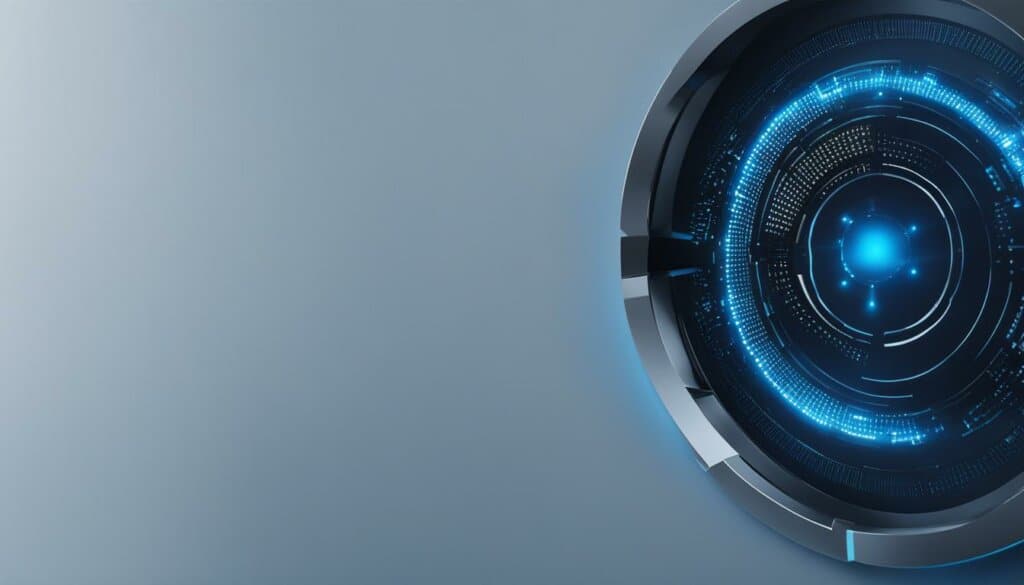
Configuring Network Perimeter Security Measures
When it comes to protecting your business from insider threats, configuring network perimeter security measures is crucial. By implementing robust firewalls, utilizing VLAN segmentation, establishing VPNs, and setting up DMZs, you can significantly reduce the risk of unauthorized access to critical systems and data.
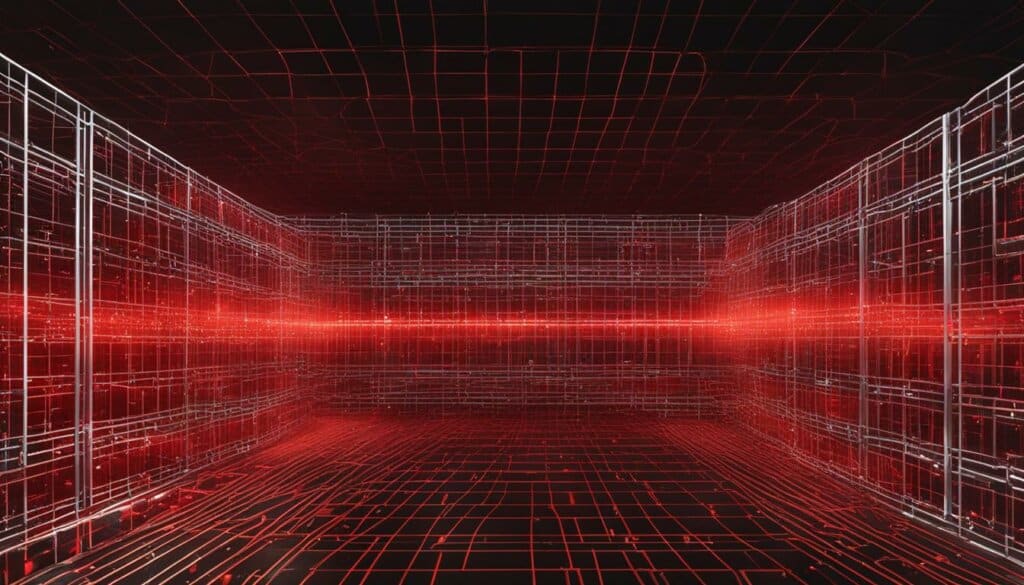
Firewall configuration is the first line of defense for your network. A well-configured firewall acts as a barrier, monitoring and controlling incoming and outgoing network traffic. It filters out malicious traffic and allows only authorized connections, preventing unauthorized access to your IT infrastructure.
VLAN segmentation is another effective network security measure. By dividing your network into separate virtual LANs, you can isolate critical systems and restrict access to sensitive data. This helps contain any potential insider threat incidents and prevents unauthorized users from moving laterally within your network.
A Virtual Private Network (VPN) creates a secure encrypted connection between remote users and your network, ensuring that data transmitted over the internet remains confidential. VPNs are especially crucial when employees need to access sensitive information or systems remotely, as they provide an additional layer of protection against unauthorized access.
Lastly, establishing a Demilitarized Zone (DMZ) acts as a segregated network segment that serves as an additional buffer zone between your internal network and the external internet. Placing public-facing servers and services in the DMZ ensures that any potential breaches or attacks are contained and do not impact your critical systems and data.
Table: Network Perimeter Security Measures
| Security Measure | Description |
|---|---|
| Firewall Configuration | Setting up and configuring firewalls to filter network traffic and block unauthorized access. |
| VLAN Segmentation | Dividing the network into separate virtual LANs to isolate critical systems and restrict access to sensitive data. |
| Virtual Private Network (VPN) | Creating a secure encrypted connection for remote users to access the network securely. |
| Demilitarized Zone (DMZ) | Establishing a segregated network segment as a buffer zone between the internal network and the external internet. |
By implementing these network perimeter security measures, you can enhance your overall cybersecurity posture and protect your business from insider threats.
Implementing Monitoring and Auditing Solutions
Proper monitoring and auditing are vital components of a comprehensive cybersecurity strategy. By implementing robust monitoring and auditing solutions, businesses can enhance their ability to detect and investigate insider threats effectively. These solutions enable organizations to gain visibility into critical system changes, user actions, and potential security events.
One essential tool for monitoring and auditing is log correlation. Log correlation engines analyze and correlate log data from various sources, helping organizations identify patterns, anomalies, and potential security incidents. By aggregating and correlating logs, businesses can gain a holistic view of their IT environment and detect indicators of compromise or suspicious activities.
Another crucial component is security information and event management (SIEM) systems. SIEM solutions collect, analyze, and report on security events and log data generated by various systems and applications throughout the IT infrastructure. By centralizing and parsing this information, SIEM systems provide organizations with real-time alerts, actionable insights, and incident investigation capabilities.
“Proper monitoring and auditing are vital components of a comprehensive cybersecurity strategy.”
Change auditing
Change auditing software tracks modifications made to systems, applications, and configurations. It helps organizations monitor changes to crucial files, directories, and system settings, allowing them to identify unauthorized changes or potential security breaches. By recording and analyzing these changes, businesses can gain visibility into the actions of users and detect insider threats in real-time.
Implementing monitoring and auditing solutions should be combined with established processes for incident investigation. When potential threats or breaches are detected, organizations must have a structured approach to investigate and respond promptly. Incident investigation procedures should involve cross-functional teams and follow predefined escalation paths to ensure timely resolution and minimize the impact of insider threats.
In summary, implementing monitoring and auditing solutions such as log correlation, SIEM systems, and change auditing software is vital for enhancing insider threat detection and incident investigation capabilities. These tools provide organizations with comprehensive visibility into their IT infrastructure, enabling them to proactively identify and respond to potential threats and breaches. By combining effective monitoring and auditing practices with well-defined incident investigation procedures, businesses can strengthen their cybersecurity posture and protect against insider threats.
| Key Components of Monitoring and Auditing Solutions | Benefits |
|---|---|
| Log correlation engines |
|
| Security Information and Event Management (SIEM) systems |
|
| Change auditing software |
|
Safeguarding Your Business from Insider Threats
Protecting your business from insider threats is a critical aspect of cybersecurity. By implementing effective cybersecurity best practices and continuously monitoring user behavior, access, and system changes, you can enhance your organization’s security posture and ensure robust protection against insider threats.
Insider threat detection is a key component of safeguarding your business. By utilizing advanced monitoring and auditing solutions, such as log correlation engines and security information management systems, you can detect and investigate potential insider threats in real-time. This proactive approach enables you to identify and mitigate risks before they escalate to serious security incidents.
Adhering to cybersecurity best practices is vital in safeguarding your business against insider threats. This includes performing comprehensive risk assessments, documenting and enforcing security policies and controls, implementing physical security measures, deploying effective security software and appliances, and configuring network perimeter security measures.
Remember, protecting against insider threats is an ongoing process that requires a holistic approach. By combining these cybersecurity best practices, leveraging modern technologies, and staying informed on the latest industry trends, you can significantly reduce the risk of insider threats and strengthen your organization’s overall cybersecurity posture.
FAQ
What are insider threats in cybersecurity?
Insider threats in cybersecurity refer to individuals within an organization who have authorized access to critical data and IT systems and can potentially cause harm to the business.
How can insider threats be managed?
Insider threats can be managed through the implementation of policies, procedures, and technologies.
What is the importance of risk assessments in protecting against insider threats?
Risk assessments help identify critical assets, vulnerabilities, and potential insider threats, allowing businesses to prioritize risks and enhance their IT security infrastructure.
How can security policies and controls help mitigate insider threats?
Clear documentation and consistent enforcement of security policies and controls ensure that employees adhere to the required security protocols, reducing the risk of insider threats.
What is the significance of physical security in protecting IT environments?
Implementing physical security measures, such as hiring a professional security team and establishing access restrictions, helps prevent unauthorized access to critical IT environments.
What are essential security software and appliances for safeguarding against insider threats?
Essential security software and appliances include Active Directory, endpoint protection, intrusion prevention, encryption software, and data loss prevention systems.
What are best practices for password and account management to enhance cybersecurity against insider threats?
Best practices include requiring unique credentials, implementing multi-factor authentication, and regularly reviewing access privileges.
How can remote access be monitored and controlled to prevent insider threats?
Deploying intrusion detection systems, wireless security measures, and conducting regular access reviews helps ensure that remote access privileges are appropriately managed.
What are effective network perimeter security measures against insider threats?
Configuring firewalls, implementing VLAN segmentation, utilizing VPNs, and establishing DMZs are effective measures to prevent unauthorized access to critical systems and data.
Why is monitoring and auditing important in detecting and investigating insider threats?
Monitoring and auditing, using log correlation engines and security information systems, help detect insider threats and provide comprehensive visibility into critical system changes and user actions.
How can businesses safeguard themselves from insider threats?
By following cybersecurity best practices, continuously monitoring user behavior and system changes, businesses can enhance their cybersecurity posture and ensure robust protection against insider threats.
Source Links
- https://pathlock.com/learn/16-ways-to-prevent-insider-threats-and-detect-when-they-occur/
- https://www.netwrix.com/Insider_Threat_Prevention_Best_Practices.html
- https://www.exabeam.com/explainers/insider-threat/insider-threats/





